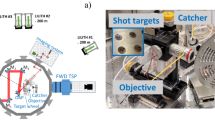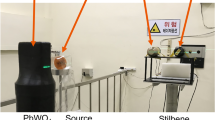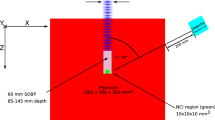Abstract
WE have recently exposed photographic plates, coated with the IIford 'Nuclear Research' emulsions, to the 9 MeV. deuteron beam delivered by the Liverpool cyclotron. The deuterons were allowed to pass into the surface of the emulsion at a small angle of glancing incidence, and an exposure of less than 0.01 sec. was found to be sufficient to give a convenient number of tracks per unit area of the emulsion. In making measurements of the lengths of the tracks of the deuterons, we found, in addition to numerous forked tracks due to collision of deuterons with protons, examples of disintegrations produced by the entry of primary particles into nuclei of light elements, such as carbon, oxygen and nitrogen, present in the emulsion.
This is a preview of subscription content, access via your institution
Access options
Subscribe to this journal
Receive 51 print issues and online access
$199.00 per year
only $3.90 per issue
Buy this article
- Purchase on SpringerLink
- Instant access to full article PDF
Prices may be subject to local taxes which are calculated during checkout
Similar content being viewed by others
References
Cockcroft, J. D., and Lewis, W. B., Proc. Roy. Soc. A, 154, 261 (1936).
Lattes, Fowler and Cuer, Proc. Phys. Soc., in the press.
Author information
Authors and Affiliations
Rights and permissions
About this article
Cite this article
FOWLER, P., BURROWS, H. & CURRY, W. Disintegration of Nitrogen into Four α-Particles by Collision with Deuterons. Nature 159, 569–570 (1947). https://doi.org/10.1038/159569b0
Issue date:
DOI: https://doi.org/10.1038/159569b0



